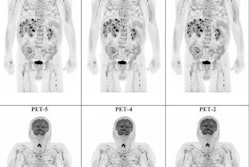Dear CT Insider,
At the recent RSNA meeting in Chicago, attendees heard much discussion about the benefits of photon-counting CT -- especially its ability to reduce the amount of radiation dose to patients.
In this edition's Insider Exclusive, we're highlighting results from a study that found that the technology can lower radiation dose by almost 20% for arterial phase abdominal scans compared with conventional CT without compromising image quality -- a finding that translates to better care for oncology patients.
After you've read our exclusive, check out our coverage of a study that found that radiation exposure from CT imaging increases brain cancer risk in children by up to fivefold -- underscoring the need to assess that the exam is ordered appropriately and that radiation doses are as low as can be and still be effective. We're also highlighting research that shows how an extended ultrasound exam performed at the bedside in trauma settings helps guide appropriate treatment prior to the use of whole-body CT and another study that addresses the question of whether contrast-enhanced CT increases children's risk of acute kidney injury.
Is there disparity in metastatic colorectal cancer treatment? Research presented at the RSNA meeting suggests that CT radiomics show there's more work to be done to determine how a diverse patient population responds; another study explores how radiomic features on CT can help classify ovarian cancer subtypes.
Finally, take a look at what a U.K. team has found regarding the use of CT imaging versus x-ray for assessing blast injury in children caught in war zones.
As we come to the end of 2022 and head into a new year, we wish you, our readers, all the best. Thank you for keeping current on CT imaging's many advantages via our CT Community!





















